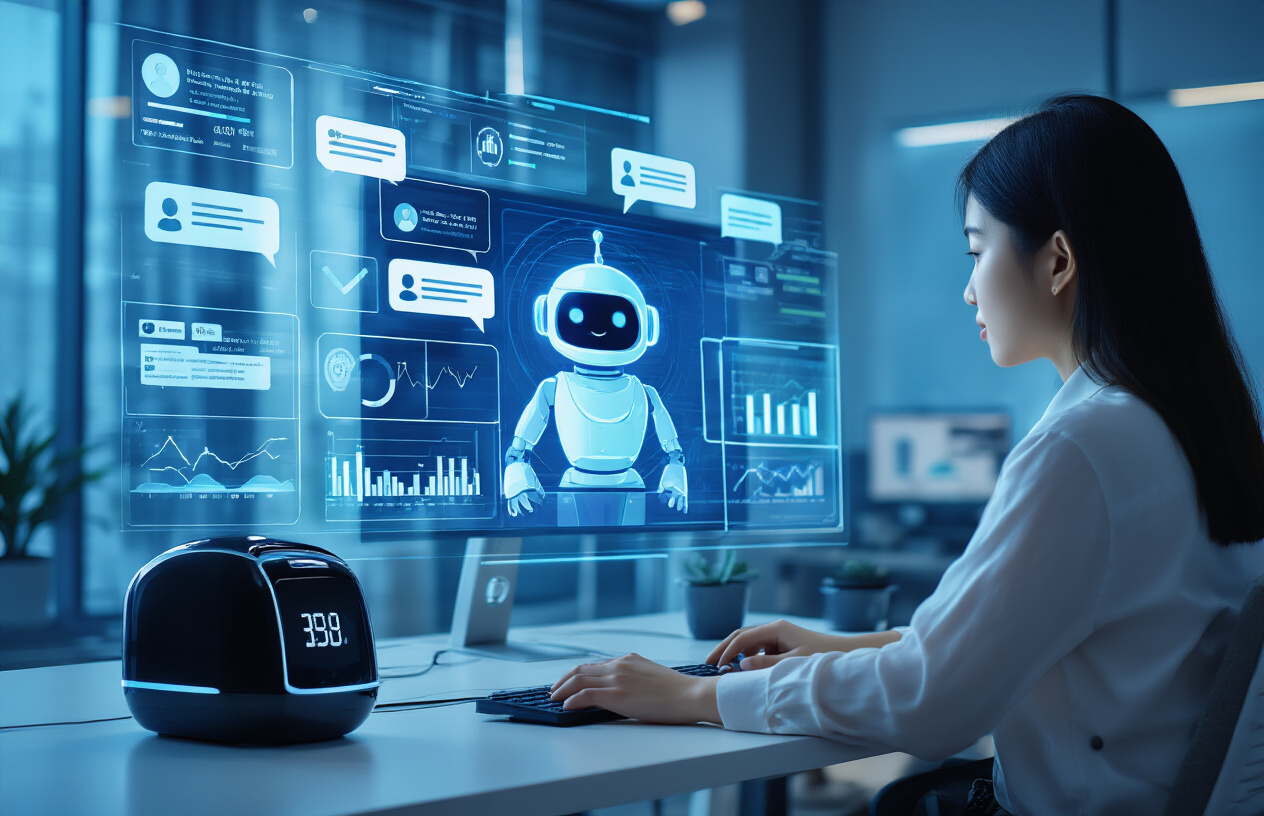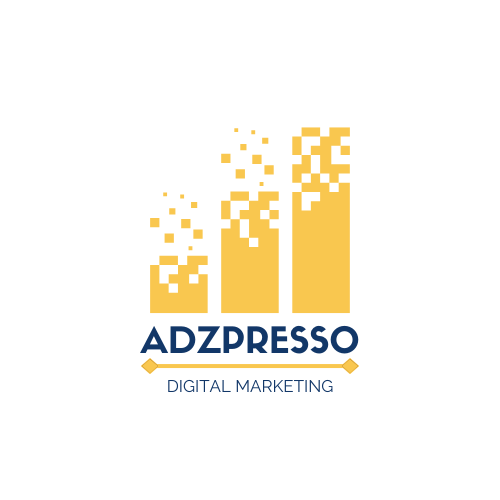Ever wondered how your competitors’ ads seem to follow you everywhere? Or why some brands nail exactly what you need before you even search for it? That’s AI in digital marketing at work, and it’s reshaping everything we thought we knew about connecting with customers.
Let me save you hundreds of wasted marketing dollars: understanding AI marketing tools isn’t optional anymore—it’s survival.
The integration of artificial intelligence in digital marketing has transformed casual browsers into buyers with scary precision. Those brands consistently outperforming their competition? They’re leveraging AI to predict behaviors, personalize experiences, and optimize campaigns in real-time.
But here’s what keeps CMOs up at night: if you’re still running campaigns the same way you did two years ago, you’re already behind. And the gap is only widening…
Understanding AI’s Role in Modern Marketing

The Evolution from Traditional to AI-Powered Marketing
Remember when marketing meant newspaper ads and cold calls? Those days are long gone. Digital marketing started with basic email campaigns and clunky websites. Now we’re watching AI completely reshape what’s possible.
Traditional marketing relied heavily on gut feelings and limited data. Marketers would create campaigns, launch them, and hope for the best. The feedback loop? Painfully slow.
AI has flipped this model on its head. Today’s marketing runs on real-time data analysis, predictive modeling, and personalization at a scale humans simply couldn’t manage alone.
The shift happened faster than most of us realized:
| Era | Marketing Approach | Data Usage | Personalization |
|---|---|---|---|
| Pre-2000s | Mass marketing | Minimal data collection | One-size-fits-all |
| 2000-2010 | Digital marketing basics | Website analytics | Basic segmentation |
| 2010-2020 | Data-driven marketing | Big data integration | Advanced segmentation |
| 2020+ | AI-powered marketing | Predictive analytics | Hyper-personalization |
Key AI Technologies Transforming Digital Campaigns
Not all AI tools are created equal in the marketing world. These game-changers are reshaping how brands connect with customers:
-
Machine Learning Algorithms scan through mountains of customer data to spot patterns humans would miss, predicting which customers are likely to convert.
-
Natural Language Processing (NLP) powers those chatbots handling customer service and the content generation tools creating personalized emails at scale.
-
Computer Vision analyzes visual content for brand placement and sentiment analysis across social media.
-
Predictive Analytics forecasts campaign performance before you spend a dollar, dramatically improving ROI.
What’s wild? These technologies work together. Your marketing stack isn’t just a collection of tools anymore—it’s an ecosystem of AI solutions constantly learning and optimizing.
Why Marketers Can’t Afford to Ignore AI
The truth hits hard: marketers who resist AI are already falling behind.
AI isn’t just a competitive advantage anymore. It’s becoming the baseline. When your competitors can analyze customer behavior in milliseconds and adjust campaigns automatically while you’re still reviewing last week’s reports… you’ve got a problem.
The numbers tell the story:
- Companies using AI marketing see an average 40% increase in productivity
- Customer acquisition costs drop by up to 50% with AI-optimized campaigns
- Conversion rates typically improve by 30% when using predictive modeling
But beyond the stats, there’s the reality of today’s consumer. People expect personalization. They want relevant content. They demand immediate responses. Without AI, delivering on these expectations at scale is practically impossible.
Real-World Success Stories of AI Implementation
Talk is cheap. Let’s look at who’s actually winning with AI marketing:
Netflix saves $1 billion annually through their recommendation engine, which keeps subscribers watching (and paying) month after month.
Starbucks uses AI to analyze 400+ factors before sending personalized offers to customers, boosting response rates by 3x.
Sephora’s Visual Artist tool uses AI to let customers “try on” makeup virtually, increasing conversion rates by 30%.
Even smaller companies are seeing massive wins. A mid-sized clothing retailer implemented an AI-powered email marketing system and saw a 70% jump in open rates within three months.
The pattern is clear: companies embracing AI aren’t just saving money—they’re creating experiences that weren’t possible before. And customers are rewarding them with loyalty and wallets wide open.
Personalization at Scale: AI’s Greatest Marketing Gift

How AI Analyzes Consumer Behavior Patterns
Gone are the days of basic demographic targeting. AI digs way deeper than that.
Today’s AI marketing systems track and analyze thousands of data points about each customer. They look at what you click, how long you stay on a page, what you buy, when you buy it, and even how you move your cursor around a website.
But the real magic? AI spots patterns humans simply can’t see.
Take Netflix – their algorithm doesn’t just know you like comedies. It knows you prefer short comedies with female leads on weeknights, but are open to longer dramas on weekends. That’s scary-specific targeting.
And it works lightning-fast. While traditional analysts might take weeks to spot a trend, AI identifies it instantly and acts on it before the moment passes.
Creating Dynamic Content That Speaks to Individual Needs
The old way: create one perfect ad and hope it resonates with most people.
The new AI way: create thousands of variations that automatically adjust to each viewer.
Modern AI doesn’t just personalize by swapping out a name in an email. It’s rewriting headlines based on your interests, showing different product images based on your previous purchases, and even changing the tone of messaging based on how you typically respond.
Email marketing platforms now use AI to determine:
- The perfect send time for each individual subscriber
- Subject lines most likely to get YOU to open
- Images that will resonate with YOUR preferences
- Products YOU’RE most likely to buy next
Personalized Customer Journeys Across Touchpoints
The customer journey isn’t a straight line anymore. It’s more like a fingerprint – unique to each person.
AI now connects the dots between:
- Your abandoned cart on mobile
- The email you opened but didn’t click
- The support chat you had last month
- Your social media engagement patterns
Then it creates a custom path just for you. Maybe you respond better to video content than written blogs. AI notices that and adjusts. Perhaps you always buy after comparing at least three products – AI will make sure you see comparisons.
This isn’t just about showing the right products. It’s about delivering the right experience through the right channels at exactly the right moments. And only AI can juggle all these variables in real-time.
Predictive Analytics: Seeing the Future of Consumer Behavior

Forecasting Trends Before They Happen
Remember when you had to wait for quarterly reports to know what customers wanted? Those days are gone. AI now spots patterns in real-time data that humans simply can’t see.
Think about it: Netflix knows what you’ll want to watch before you do. Amazon suggests products you didn’t even realize you needed. This isn’t magic—it’s predictive analytics.
The real game-changer? These systems improve themselves. Every interaction teaches the AI something new about consumer behavior. Yesterday’s purchase influences tomorrow’s prediction.
Anticipating Customer Needs with AI Models
The best marketers don’t just respond to needs—they anticipate them.
AI models now process thousands of data points about each customer:
- Past purchases
- Browsing patterns
- Seasonal behaviors
- Life events
- Economic factors
Your customers are dropping hints everywhere. AI picks them up and translates them into actionable insights.
For example, a home improvement retailer’s AI might notice you browsing patio furniture in February. Instead of pushing snow blowers like everyone else, they’ll show you early-bird specials on outdoor living—exactly when you’re planning your spring projects.
Reducing Marketing Waste Through Precise Targeting
Let’s be honest—most marketing budgets get wasted on people who were never going to buy.
Traditional targeting is like fishing with a net. AI targeting is spearfishing. The difference? Precision.
AI predictive systems can:
- Cut ad spend on unlikely converters
- Identify high-potential micro-segments
- Optimize campaign timing down to the hour
- Automatically shift resources to what’s working
One luxury brand I worked with slashed their ad budget by 30% while increasing conversions by 25%. They weren’t spending less—they were spending smarter.
From Reactive to Proactive: The Predictive Marketing Advantage
Old marketing: “Our sales are down. Let’s run a promotion.”
New marketing: “Our AI predicts sales will dip next month. Let’s intervene now.”
This shift from reactive to proactive changes everything. You’re no longer chasing trends—you’re ahead of them.
The companies winning with predictive marketing don’t just respond faster—they respond before the need becomes obvious.
That competitive edge is massive. While competitors scramble to react to market shifts, predictive marketers have already adjusted course.
Case Studies: Brands That Got Predictive Right
Starbucks uses predictive analytics to determine optimal locations for new stores with 85% accuracy on projected success rates.
Sephora’s predictive recommendation engine increased average order value by 20% by suggesting products customers actually wanted next.
ASOS reduced returns by 30% with AI that predicts which sizes customers will need based on previous purchase history and return patterns.
The North Face created an interactive shopping experience that asks customers questions, then predicts exactly which jacket they need—resulting in 60% higher engagement and substantial conversion increases.
AI-Powered Content Creation and Optimization

How AI Assists in Creating Compelling Content
AI has completely flipped the script on content creation. Gone are the days when marketers stared at blank screens, desperately waiting for inspiration to strike. Today’s AI tools can generate blog posts, social media captions, and ad copy in seconds.
But it’s not just about churning out words. Modern AI analyzes what actually resonates with your audience. It studies successful content patterns across your industry and helps you replicate those winning formulas without the guesswork.
Want to create content that hits different emotional triggers? AI can adjust tone, style, and messaging based on your target audience segments. Need to localize content for different markets? AI translation tools now preserve intent and cultural nuances, not just words.
The real game-changer? Time. What used to take days now takes minutes, freeing up creative minds to focus on strategy instead of execution.
Smart A/B Testing and Performance Optimization
Traditional A/B testing feels prehistoric compared to what AI brings to the table. Instead of testing one or two variables, AI-powered systems can simultaneously analyze hundreds of content variations.
These systems don’t just collect data—they learn from it. They spot patterns humans might miss and make real-time adjustments to headlines, images, CTAs, and more.
| Traditional A/B Testing | AI-Powered Testing |
|-------------------------|-------------------|
| Tests 1-2 variables | Tests hundreds of variables |
| Takes weeks for results | Delivers insights in hours |
| Requires manual analysis | Automatically implements changes |
| Limited sample sizes | Continuously expands testing pool |
The beauty lies in the speed. Content gets optimized while it’s still relevant, not weeks later when the moment has passed.
Automating Content Distribution for Maximum Impact
AI doesn’t just help create content—it gets it in front of the right eyes at exactly the right moment.
Smart distribution systems analyze when your audience is most active, what platforms they prefer, and what content types drive the most engagement. Then they handle the publishing schedule automatically.
Beyond timing, AI distribution tools identify micro-segments within your audience and customize delivery for each. That webinar announcement? It’ll look different for the CEO than for the marketing manager—with the messaging tailored specifically for their pain points.
Cross-platform performance tracking happens instantly too. If content bombs on LinkedIn but soars on Twitter, AI redistribution tools pivot your strategy before you even notice the trend.
The most sophisticated systems even predict content performance before you hit publish, saving you from wasting resources on pieces unlikely to generate returns.
Conversational Marketing: Chatbots and Virtual Assistants

Building Customer Relationships Through AI Conversations
Remember when chatbots were those annoying pop-ups that never understood what you were asking? Those days are gone.
Today’s AI-powered conversational tools actually get what you’re saying. They remember your past interactions, understand context, and respond in ways that feel surprisingly human.
The magic happens when these tools start building genuine relationships with your customers. A good AI chatbot doesn’t just answer questions—it creates experiences that keep people coming back.
Take Sephora’s beauty bot. It doesn’t just recommend products; it walks customers through personalized beauty routines, remembers their preferences, and makes them feel understood. That’s relationship-building on autopilot.
24/7 Engagement Without Scaling Human Resources
Your support team needs sleep. Your AI doesn’t.
This might be the biggest game-changer in digital marketing today. Small businesses can now deliver enterprise-level service without the enterprise-level staff.
A well-trained AI can handle:
- Basic customer questions (about 80% of all inquiries)
- Product recommendations
- Appointment scheduling
- Order tracking
While your human team is offline, your AI is collecting leads, qualifying prospects, and solving problems. When they get back to their desks, they’re not drowning in basic questions—they’re focusing on complex issues that actually need their expertise.
Balancing Automation with the Human Touch
AI is powerful, but it’s not perfect.
The brands winning at conversational marketing know exactly when to let AI handle things and when to bring in humans. They’re creating hybrid experiences where technology and people each do what they do best.
The key is transparency. Customers don’t mind talking to bots if you’re upfront about it. What annoys them is thinking they’re chatting with a person when they’re not.
Smart companies program clear handoff points. When conversations get complex or emotional, AI recognizes its limitations and smoothly transitions to a human agent who has full context of the previous conversation.
Measuring Conversational Marketing Success
Conversation metrics look different than traditional marketing numbers.
Beyond conversions, you need to track:
- Conversation completion rates
- Resolution times
- Sentiment analysis
- Handoff frequency
- Return engagement
The best part? Every conversation generates data that makes your AI smarter. Each interaction teaches your system to recognize patterns, anticipate needs, and personalize responses better next time.
Look at conversation analytics as your secret competitive advantage. While competitors are still guessing what customers want, you’re building a database of exactly what they’re asking for—in their own words.
The Future Landscape: Emerging AI Marketing Trends

A. Voice Search Optimization and AI
The way people search is changing dramatically. Right now, about 40% of adults use voice search daily. That’s huge!
Think about it – when was the last time you asked Siri or Alexa something instead of typing it? Voice search isn’t just convenient; it’s reshaping how brands need to think about their digital presence.
AI is the magic behind this revolution. These systems are getting freakishly good at understanding natural language, even with all our weird human nuances and accents.
For marketers, this means a complete strategy shift. People speak differently than they type. They ask full questions rather than typing fragmented keyword phrases. Your content needs to answer these conversational queries.
Some quick tips to stay ahead:
- Focus on long-tail, conversational keywords
- Create FAQ-style content that directly answers questions
- Optimize for featured snippets (those answer boxes at the top of search results)
- Make sure your local SEO is on point (many voice searches are location-based)
B. Visual Recognition Technologies in Marketing
Visual AI is absolutely exploding right now. Brands that aren’t paying attention are missing a massive opportunity.
Remember when you had to describe what you were looking for? Those days are fading fast. Now consumers can snap a pic of something they like and find similar products instantly.
Pinterest’s Lens feature lets users take a photo and find visually similar pins. Snapchat and Instagram filters create interactive branded experiences. Amazon’s StyleSnap helps shoppers find fashion items by uploading images.
The tech is getting scary-good at recognizing objects, faces, scenes, and even emotions from images. For marketers, this opens up incredible possibilities:
- Visual search optimization (making sure your product images are findable)
- Emotion analysis from customer reactions
- Personalized visual recommendations
- Automated content tagging and categorization
Brands that nail visual search now will have a serious competitive edge in the coming years.
C. Immersive AR/VR Experiences Powered by AI
The metaverse might be getting all the buzz, but AR and VR backed by AI are already transforming marketing in the real world.
IKEA’s Place app lets you visualize furniture in your home before buying. Sephora’s Virtual Artist allows customers to try makeup virtually. These aren’t gimmicks—they’re solving real consumer pain points.
What makes these experiences truly powerful is the AI working behind the scenes. These systems learn from each interaction, constantly improving their ability to render objects realistically and understand how users engage with virtual environments.
The numbers back up the hype. Shoppers are 40% more likely to purchase a product they’ve experienced through AR. That’s a conversion rate increase most marketers would kill for.
For brands looking to jump in:
- Start with practical AR applications that solve customer problems
- Focus on mobile AR first (it has wider reach than VR headsets)
- Use these technologies to tell immersive brand stories
- Collect data on how users interact with your virtual experiences
D. Ethical Considerations in AI Marketing
The AI marketing revolution comes with some serious ethical baggage.
Privacy concerns top the list. When AI systems track consumer behavior across devices and platforms, where’s the line between personalization and surveillance? Most consumers don’t fully understand how their data is being used, creating a transparency problem.
Then there’s the bias issue. AI systems learn from existing data, which means they can perpetuate and amplify biases present in that data. This can lead to discriminatory targeting or exclusion of certain demographics.
The solution isn’t avoiding AI—it’s using it responsibly. Forward-thinking brands are already:
- Being transparent about data collection and AI use
- Giving consumers genuine control over their data
- Regularly auditing AI systems for bias
- Setting ethical boundaries that go beyond legal requirements
Smart marketers recognize that ethical AI use isn’t just about avoiding PR disasters—it builds genuine consumer trust. And in today’s environment, trust might be the most valuable currency of all.

The rise of AI has fundamentally transformed digital marketing strategies across industries. From delivering hyper-personalized experiences at unprecedented scale to forecasting consumer behaviors with remarkable accuracy, AI tools are empowering marketers to connect with audiences more effectively than ever before. Content creation, optimization, and conversational marketing through chatbots have all been revolutionized, allowing brands to engage customers at every touchpoint with relevance and precision.
As we look toward the future, embracing AI in your marketing strategy isn’t just advantageous—it’s essential for staying competitive. Whether you’re just beginning to explore AI capabilities or looking to enhance your existing tech stack, the time to integrate these powerful tools is now. By leveraging AI’s capabilities, marketers can not only streamline operations but also deliver the personalized, responsive experiences that today’s consumers demand.
